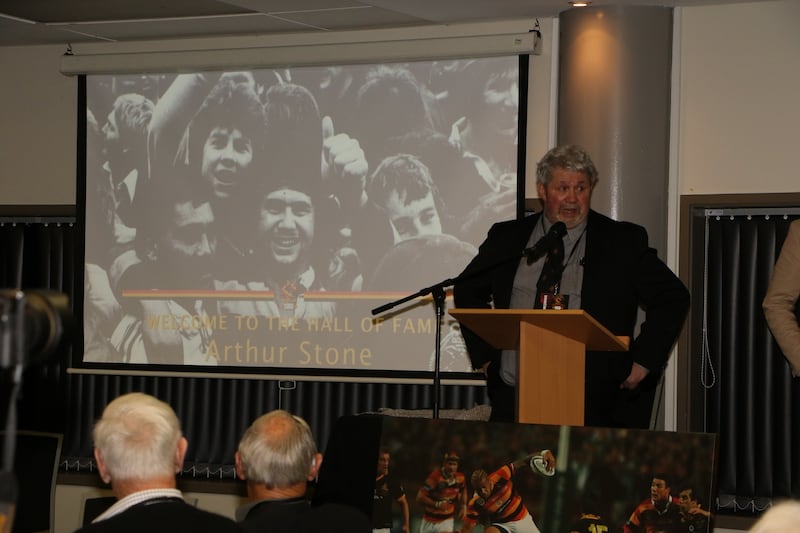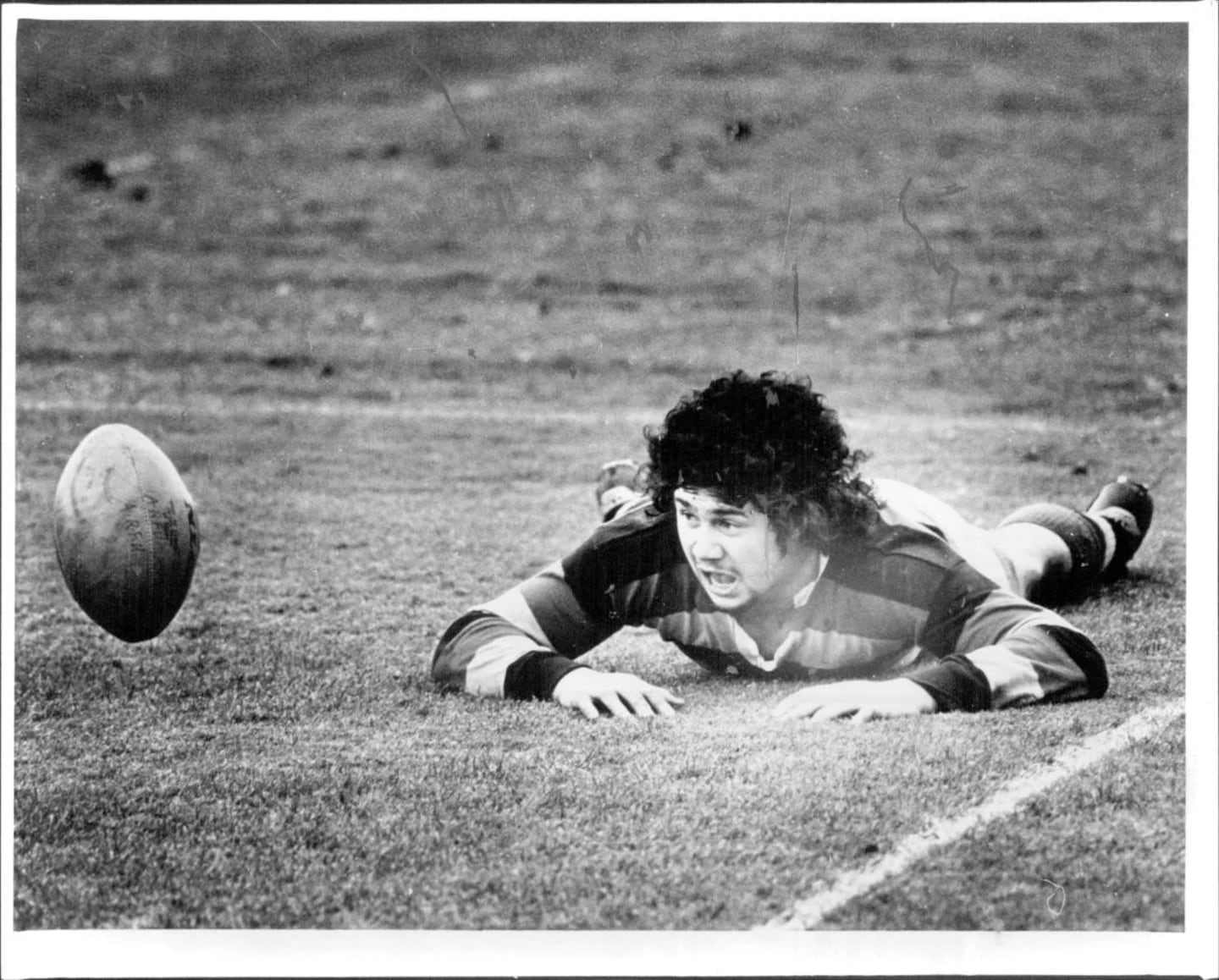This article was first published by Stuff.
The year was 1984 and the Wallabies had their eyes on the Bledisloe Cup before the third test at the Sydney Cricket Ground.
There were plenty of reasons for supporters of the All Blacks to feel stressed. The Wallabies team, coached by Alan Jones, didn’t lack talent.
The Aussies had won the first test in Sydney. The All Blacks kept the series alive by winning the second match in Brisbane.
Then it was back to Sydney.
It was revealed that second five-eighth Warwick Taylor was scratched from the All Blacks. Pulses jumped. But there was an excellent replacement in Arthur Stone, and coach Bryce Rope knew he was a good operator.
Stone scored a vital try in Sydney - his only one in a test; he stormed down the left-hand touchline and crunched a tackler into the dust to help the All Blacks retain the Bledisloe Cup with a 25-24 win.
It was a different era.
Players weren’t allowed to get paid and their meagre allowances didn’t cover the cost of the post-game beers. Tries were worth only four points, and there were no TMOs or cameras peering into every ruck. But the players were still professional in attitude and preparation.
Now, 40 years later, Stone reflects on a rugby career that enabled him to play in New Zealand and overseas. He represented the Waikato, Bay of Plenty and Otago provincial teams. He also played for NZ Māori.

He now has a building business in Dunedin, having relocated to the city in the 1980s when he played for Otago.
The All Blacks will meet the Wallabies in Sydney on Saturday night for Bledisloe I. Times have changed.
But the jersey is still black and adorned by a silver fern. It meant a lot to Stone.
You played 14 games (nine tests) between 1981 and 1986. Was it emotion, relief or elation when you beat the Wallabies in 1984?
“With the All Blacks, there’s a lot more pressure put on yourself, as a player, because of the name of the team. Which surprises me now - because the value of the All Blacks jersey doesn’t appear to be as much. That would be where I am starting to see things.
“I think giving a person a test jersey for one minute is devaluing the value of the All Black jersey. Myself, and some of the other people that I speak to, are astonished that we are allowing that to happen.
“It’s not about how hard you work, it’s how consistent you are playing. Most people who make it in any type of sport - it’s because of the performances they consistently turn out, week after week.
“Some good players get picked on a whim, but most of them have to grind and be consistent. Showing they are capable of being in those moments that obviously put you under duress, and being able to survive it.’’
How did you toughen up, mentally, to cope with playing against tough old veterans in the amateur era?
“I grew up in an area called Ford Block. It is a well-known area in Rotorua for people who understand things. My dad helped run a pub called The Palace, in Rotorua, and frequently there would be invites for the whole pub to come around to our home. And Once Were Warriors [situations] raised its head a few times.
“So my brothers and I learned to look after ourselves really early in life. But, in saying that, we certainly learned a lot about how strong you can be if you stay united. Which made us really good as far as brothers are concerned. Because we have still got the strong link even now.’’
What was your training regime?
“I don’t like saying this, because most people think I’m lazy, but in my Waikato days I used to work up at Glenbrook [Steel Mill]. I had a foreman who was a rugby enthusiast. He would allow me to finish 45 minutes earlier, and I would start running back to Hamilton.
“Then my workmates would go to a bottle store and then pick me up in a van 10-15 miles down the road and then I would have a beer with them in the van as we drove back to Hamilton.
“I did the same sort of thing when I moved to Rotorua and worked at Kinleith Paper Mill.’’

When you toured with the All Blacks against the Wallabies in 1984 you could only dream of having a support crew like the team does now. What was it like to get paid a pittance and just play for the satisfaction of representing New Zealand?
“It was a different type of experience. Obviously everyone would like to have a few more dollars and things like that. In my era people played for the love of the game, and were lucky enough to be chosen to represent other areas within the bigger area.
“Which you can’t buy. It’s hard to explain to people, the differences sometimes. Because a lot of people value money more than they do friendships.
“Although the ability to make a living is important, you still can’t beat a lot of the good memories that we have created. I have had so much fun with guys like Steven Pokere, Frano Botica and Walter Little. Bill Osborne, too.’’
Who was the toughest player you opposed?
“A lot of people said the Frenchman Philippe Sella was one of the toughest to come against, but I don’t know … I got schooled by [All Black] Bruce Robertson as a young fellow.
“What he taught me was something that has stuck with me throughout my whole career. It was his ability to just put you in a position that nullified anything you could do. He was awesome at it.
“And the second person would be another All Black in Bill Osborne. He taught me a lot, and he has also become a good friend.
“I remember when I played against Bill Osborne, when he was with Whanganui, and he smashed me the first, second and third time I got the ball. Because he was renowned for tackling. But at the same time my wings were scoring tries because he was committed to me. So I did my job by putting guys into space.
“Although I got smashed I had the satisfaction of seeing guys score tries.’’
You grew up in Rotorua, but also went to high school in Whakatāne. What was that like?
“I played rugby for my school, and in the afternoons I would play for the area I grew up in, a place called Ruatoki. I spent a lot of time rubbing shoulders with guys like [activist] Tame Iti and people like that.
“I ended up playing in Tūhoe festivals, where everything is about the local families, but they put their bodies on the line. Yeah, it was quite humbling. I have been quite lucky as far as that is concerned.’’
Did you play rugby with Tame Iti?
“No, he was about 11 years older than me and I was just a snotty-nosed young Māori boy from Trident High School. I was quite lucky in that as a 17-year-old at high school, I possibly had a few skills that helped me to get to places where most kids wouldn’t get to.
“So I was well looked after by senior players in different grades in different clubs.’’
Your intercept try for Waikato in the successful Ranfurly Shield challenge against Auckland in 1980 was a cracker. You were just 19 years old. It must have been the start of a bucketload of pleasant memories from your rugby days?
“I have been lucky. I went through a few phases. I was there when they [the anti-tour protesters] stormed Rugby Park to end the game in Hamilton [against the Springboks] in 1981.
“I won competitions with my club sides, I took over and coached my brothers and we went from being a team that couldn’t win a game to playing and losing in the final of the competition in Rotorua.
“I went to Italy. I was in a team that just needed a bit of leadership. We put a hangi down, teaching the Māori songs to sing along to, and taught them a bit of a haka. We went from being in the second division into the first division.’’
- Stuff

